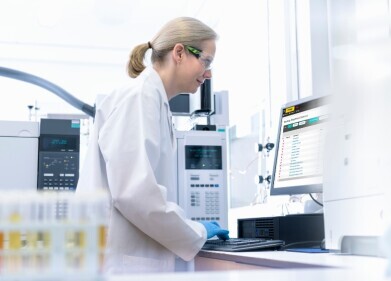IT Solutions
Smart Laboratories - The Future of the Lab
Jul 30 2022
When Dutch optometrist Zacharias Janssen invented the first microscope in the 16th century, it transformed the face of science. Since then, technology has advanced in leaps and bounds. Over the past few years, these advances have led to the advent of smart laboratories. So, what exactly is a smart laboratory?
Read on to find out more about what makes a laboratory “smart” and why every facility should take steps to optimise operations.
Intelligent Laboratory Information Management Systems
From academic laboratories run by public universities to privately-operated facilities owned by blue-chip corporations, data drives modern research. High-throughput technologies such as DNA sequencing have allowed scientists to unlock an incredible volume of data. Without the right data management solutions in place, this information can’t be converted into useable information. Intelligent Laboratory Information Management Systems (LIMS) make it easy for laboratories to process large volumes of data. In molecular biology labs, where high-throughput technologies are now standard, intelligent LIMS solutions are indispensable.
Purpose-built laboratory informatics solutions
When it comes to increasing productivity, a high-end laboratory informatics solution is essential. Ideally, laboratories should invest in laboratory informatics solutions designed to fit the needs of their industry. For example, drug discovery and development labs should use informatics solutions designed specifically for the pharmaceuticals sector. This enables researchers to capture, track and maintain critical data throughout the drug discovery and development process. Similarly, food analysis laboratories should invest in informatics solutions designed to cater to the unique needs of foodomics researchers.
Integrating different systems
In the past, laboratories have relied on personnel to manually transfer and analyse data. Smart laboratories reimagine this process with systems that actively “talk” and communicate with each other. Automating this process slashes processing and analysis times and reduces the risk of human errors. Building an interconnected laboratory ecosystem helps improve workflows and unlock the full potential of data. This goes hand-in-hand with a significant reduction in costs and an improvement in regulatory compliance.
Considering return on investment
Assessing return on investment (ROI) is a top priority for smart laboratories. When considering a new system, instrument or technology, laboratory managers should take ROI into account. For example, will a data research management system boost productivity by automatically integrating data? Or can the laboratory unlock better savings by investing in an instrument that automates manual tasks? Smart laboratories always consider ROI when investing in new assets.
Information Technology (IT) is the backbone of smart laboratories. Software-as-a-Service (SaaS) has reimagined how laboratories access platforms and optimise workflows. Find out more about the latest SaaS solutions offered by leading LIMS provider LabWare in ‘Software-as-a-Service LIMS for QA/QC’.
Digital Edition
Lab Asia 31.2 April 2024
April 2024
In This Edition Chromatography Articles - Approaches to troubleshooting an SPE method for the analysis of oligonucleotides (pt i) - High-precision liquid flow processes demand full fluidic c...
View all digital editions
Events
May 05 2024 Seville, Spain
InformEx Zone at CPhl North America
May 07 2024 Pennsylvania, PA, USA
May 14 2024 Oklahoma City, OK, USA
May 15 2024 Birmingham, UK
May 21 2024 Lagos, Nigeria




.jpg)













